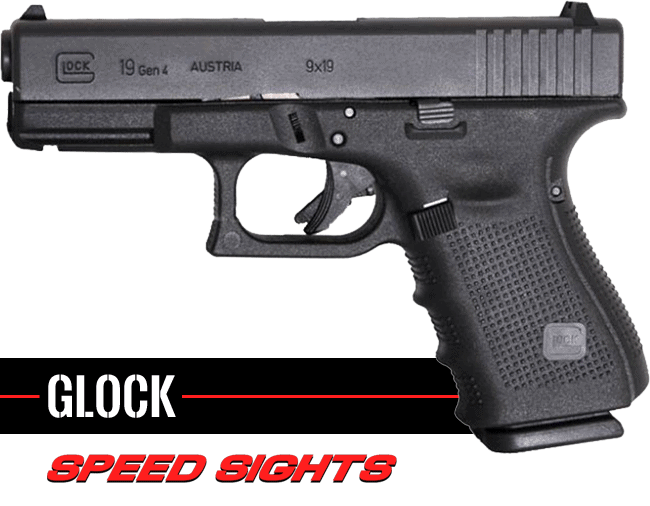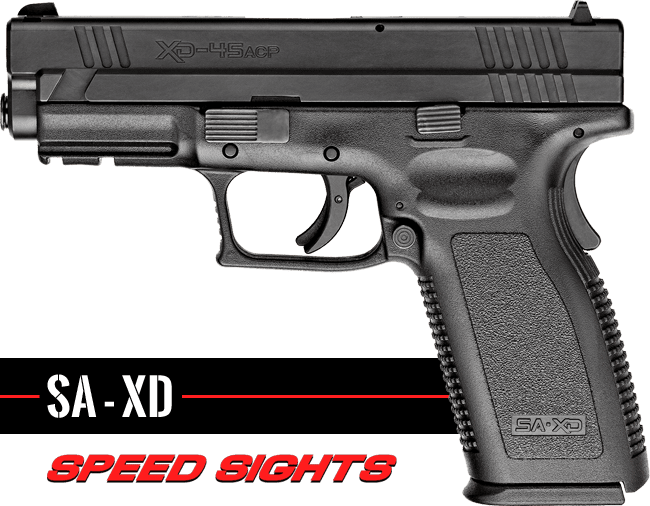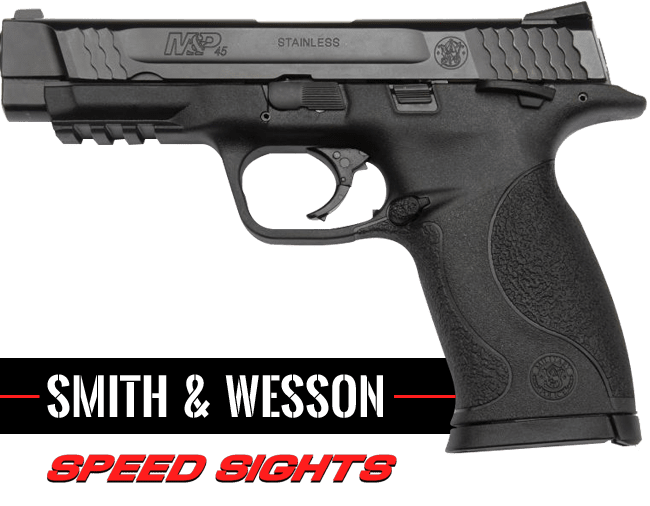Combat Proven Handgun Sights
Read these after action reports to see how Speed Sights stay bright, sharp and visible…even during the extreme rapid fire of real gunfights.
Law Enforcement research has shown that almost no one remembers seeing their sights during a real gun fight.
Speed Sights
After Action Reports and U.S. Special Forces testimonials
For decades, law enforcement research, like that done by 36 year police veteran Dave Spaulding, has shown that in actual gun fights, no one actually remembered seeing or using their ordinary notch and post sights. Police researchers like optometrist Dr. Edward Godnig (Vision and Shooting, Police Policy Studies Council, 2004) explained that during the life or death stress of actual shoot outs, surges of adrenaline actually change the shape of the eye’s lens and make it impossible to focus on small, close details…like ordinary gun sights. He explained in his article, “Vision and Shooting” that for gun sights to actually work they must be so bright and clear that they “interrupt the field of vision” and essentially force the eyes to see them and process the visual information. That’s exactly what Speed Sight users report when they were forced to use their Speed Sights equipped weapons in actual shooting incidents.
Question: “Did you remember seeing your Speed Sights during the incident?”
Answer: “Yes, the sights were awesome! They are right in your face, right where you need them, you can’t help but see them.”
Report 1: Two private security contractors had just shown up for their shift to protect a pay day cash box at a business. Both had weapons equipped with Speed Sights. One was carrying a Glock 17 9mm, the other a Springfield XD, also in 9mm. The individual with the Glock 9mm had just strapped on a vest and was standing outside the front door of the business he had been hired to protect, on a raised veranda, when suddenly two individuals, evidently intent on killing three men to get at the cash, appeared from around a corner and without any warning, drew handguns and opened fire. Two of their shots immediately struck him in the chest…hitting the vest he had just put on. Unhurt and startled into action, he leapt backward, impacting against a brick wall behind him and ended up lying on the floor of the veranda where he began to return fire. His partner, who had been just inside the door of the building, stepped out and also immediately began to return fire. A rapid fire shoot ensued. The individual with the Glock 9mm reported that at one point he was lying on his side on the veranda, shooting at the two attackers who were in motion across his front, trying to maneuver in closer as they shot.
When asked about the very awkward position he was in and if he had remembered seeing his Speed Sights, he exclaimed, “Yes! The sights were awesome! They are right in your face, right where you need them, you can’t help but see them!” He confirmed that absolutely he was aware of and used his Speed Sights during the incident and said that they gave he and his partner the critical edge they needed. He reported that both attackers were badly wounded and expired at the scene. Neither he nor and his partner were hurt during this fast, close quarters shoot out. When asked if his partner had commented about the Speed Sights on his XD, he replied. “Yes, he did. after it was over, he came over, sat down next to me and said, “Man, these sights are OFF THE CHAIN!” For those not familiar with the expression, saying something is “off the chain” is to compare it to a ferocious guard dog who has broken free from his chain and is mauling his attacker.
Report 2: (Note: the individual reporting this incident was, at the time, working as part of a top level personal protection team. Details must remain confidential. This is the individual who was interviewed by Dave Spaulding as part of his research and mentioned in his article, “Diamonds in the Rough”. (lawofficer.com 2010)
On an assignment, this individual and his team were suddenly boxed in and ambushed by multiple attackers, armed with handguns and a rifle. The team immediately engaged the attackers with handguns at close quarters while moving quickly to protect their principle. The individual reporting this incident was faced with two attackers with hand guns that were within his zone of responsibility. Distance was estimated at 15 to 20 feet. Using the standard two to the chest and one to the head formula, he was able to neutralize both attackers. It is not known whether the attackers were able to even get off one shot. He reported one near miss of his own, all the others being solid hits.
When asked if he remembered seeing his Speed Sights during this extreme high speed incident, he replied. “Yes. I clearly saw them printed over my targets as I got off my shots.” Dave Spaulding reported further in his article that this highly trained individual “couldn’t praise the sights enough.” and credited the Speed Sights with giving him an advantage in the fight. No one on his team was injured. It is believed all the attackers either expired at the scene or shortly thereafter.
Report 3: A Sargent with the Pittsburgh police department contacted the staff at Speed Sights in 2015 to report that he and four other officers had been called to an active shooter incident. (https://www.wpxi.com/news/local/breaking-active-shooter-incident-pittsburgh/45967722/)
He had recently bought a set of Speed Sights for his Glock 17 and been able to practice with them for a few weeks. The active shooter was a man armed with a scope mounted AR15 style rifle loaded with a 30 round magazine, who had begun to shoot at citizens in their cars and had ended up hijacking ahttps://www.post-gazette.com/local/city/2015/06/22/Shooting-incident-blocks-traffic-on-Route-51-near-Bausman-pittsburgh/stories/201506220143 white sedan. Driving the stolen sedan down a crowded four lane highway, he became stuck in the heavy traffic, which came to a complete halt once the shooting started.
At that time four officers had closed in on him and began engaging him at a distance. The attacker was barricaded in his car and behind a concrete road divider. The officers were faced with a long distance, difficult target for handguns. News photos of the scene afterwards show a road way littered with shell casings from the rifle, a testament to the intensity of the gun battle.
Then the officer with the Speed Sights on his Glock 17 arrived. He described how after he had responded in his patrol car to the scene and was attempting to catch up to the suspect he also became stuck in the traffic jam.
He reported that he then ran toward the sound of the gun fight between the rows of stopped cars and trucks. Dodging around another vehicle, he suddenly found himself directly in front of the active shooter, now sitting in the front seat of his car, firing through the broken windshield at the other officers. He estimates he was about 50 yards away at that time. Making a split second decision, he began to walk forward toward the shooter, firing continually as he advanced. At one point he reports feeling and hearing rifle rounds passing close by his head and body. Using his Speed Sights, he hit the shooter twice in the head. The hits were not immediately fatal, but threw off his fire and then knocked him down onto the front seat. The officer finally found himself standing right in front of the shooters car, when he realized he needed to reload. Just as he dropped his mag and began to pull out a new one, the badly wounded shooter began to rise up off the front seat. But right at that moment, a fellow officer appeared on his right, armed with a sub gun and hosed down the shooter, putting him down for good.
This officer told us: “I got stuck in the traffic and I had to run 200 yards to the scene, but I was still able to get a head shot from 30 yards with the Speed Sights. I wouldn’t have been able to do that with regular sights.”
Perhaps most significantly, he told us in a later interview: “The strange thing is, when I remember back on the incident, the only image in my mind is of this huge, glowing orange diamond…my front sight, with the perp’s head right at the tip.” So evidently, during this “condition black” high stress incident, during the “Tunnel Vision” that happens, his mind and visual system picked out the brightest, most important object in his field of vision and actually MAGNIFIED it for him. This EXACTLY the opposite of what happens with regular sights, where law enforcement research shows that ordinary front sights “disappear” during high stress. People report, “No, I don’t remember seeing my sights at all. I was just shooting.”
The officer in this incident further credited his fellow officers, his training and his Speed Sights for being able to bring the incident to such a positive conclusion. Only one civilian was lightly wounded by the suspect. After reporting this incident, this officer placed an order for nine more sets of Speed Sights, one for another of his guns and the rest for fellow officers.
Special Forces Group Testimonials
In 2015, a Special Forces group that was deploying to an active war zone asked if it was possible to equip their whole team with Speed Sights. One of their group commented, “I’ve tried all the other sights. These are the best.” Thirteen sets of Speed Sights were sent. When they inquired about payment, we replied, “You have already paid”. In appreciation, the team later sent a plaque that included an American flag that had flown over their base in the war zone.
Dytac Defense, a training group founded and staffed by U.S Special Forces members, use the Speed Sights on their duty weapons. Here are some of their comments. (They did not want their names published and did not include them)

“I have used speed sights for several years. They are the best pistol sights I have ever used and would recommend them to anybody in the military/law enforcement/security industry. The contrast in the front and rear sights allow for quick sight acquisition. They have dramatically improved speed and accuracy of all the operators I have trained and worked with. They have held up to several combat deployments in the middle east. Training and operating with any other sights leaves the operator at a disadvantage.”
-Special Forces Weapons and Tactics Expert
“I prefer these sights far above any others. They are not large and obscure the target like some I have seen. Because of the design I have a consistent sight picture and am more accurate on both close and far shots. I have improved my time and accuracy from the draw. I would use it operationally and for home defense.”
-Special Forces Medic
“Speed sights are the chosen and trusted sights for DYTAC DEFENSE Inc. Our staff trains, operates and strongly encourages all other military, law enforcement and security professionals to incorporate Speed Sights to their equipment requirements. They have enhanced our security staff’s ability to effectively and efficiently handle threats in the most hostile environments that our nation faces today. We endorse and highly recommend these sights to all shooters ranging from novice to competition to those facing hostile threats on a regular basis.”
-DYTAC DEFENSE President and Special Forces Weapons and Tactics Expert


Why Choose Speed Sights?
With a sight picture so precise…
How can you miss?

No matter what your current skill level, Speed Sights can bring you closer to really “shooting your best”.
Our 3 diamond “point to point” system offers a razor sharp, instinctive pattern that locks together instantly

Premium Quality Night Sights
Our tritium lamps are freshly installed by Trijicon* corporation, the leading supplier of tritium weapons sights.


High Visibility Weapon Sights
Advanced Design and Engineering is an American company created by shooters like you. Our products are inspired by our desire to shoot our best and give the same kind of service we appreciate when we shop for firearm products. Our premium weapons sights are manufactured and assembled in the USA and are backed by a no questions asked warranty.

Combat Proven
“They really stand out during that transitional time when it’s too dark to see your sights clearly but it’s too light to really see the tritium, or when going suddenly from a bright environment into a much darker one when the eyes must adjust. These sights…might very well be the future of combative handgun sights”





